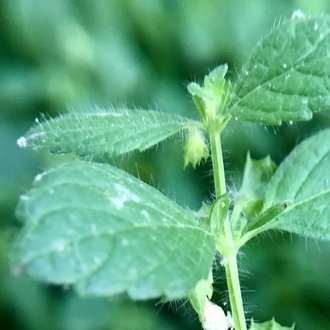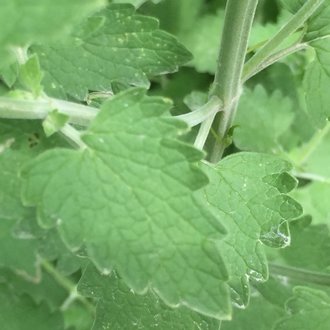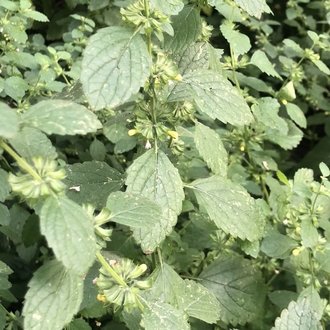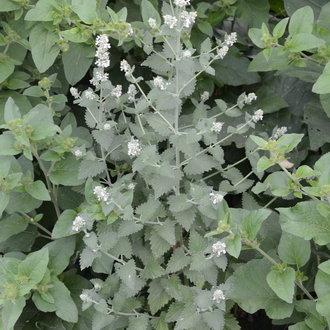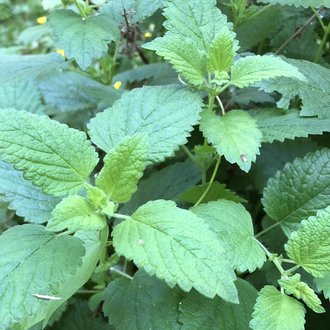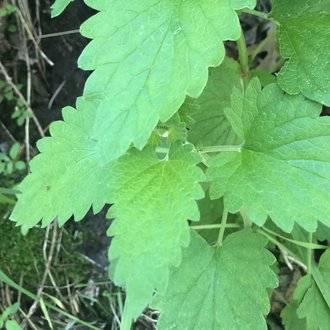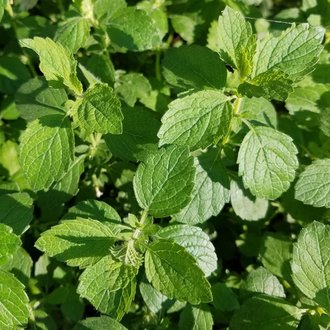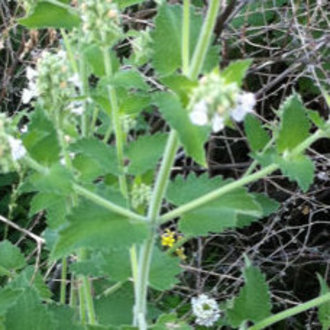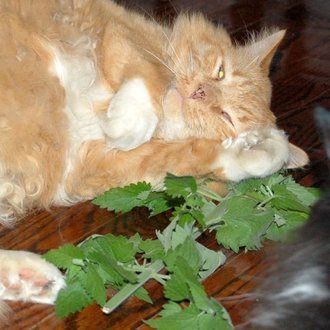Lemon Balm vs Catnip
These two non-native aromatic perennials, both commonly grown in gardens, are frequently confused visually due to similar leaf shape and serrations and growth habit. They are easy to tell apart by their aroma, differences in pubescence, leaf shape, bloom arrangement, and their effect on most cats. Lemon balm has a lemony aroma, and prefers moister habitats whereas catnip is found in drier habitats.
Lemon Balm (Melissa officinalis) | Catnip (Nepeta cataria) |
A common garden plant with a lemony scent, frequently reproducing by seed and established in the wild at many locations across North America. | A perennial with a distinctive aroma, introduced in North America, best-known for its effect on cats. |
Hairs on leaves and stems are larger and less numerous, visible to the naked eye. Photo © Andrew Garn, CC BY 4.0. | Leaf surfaces and stems are finely pubescent, velvety to the touch, but hairs are so small that they are not visible to the naked eye, imparting only a grayish sheen. Photo © Mary Krieger, CC BY 4.0. |
Inflorescences form along nodes on nearly the entire length of the stem. Photo © Andrew Garn, CC BY 4.0. | Inflorescences form in a spike at the end of each stem, and are absent at nodes lower down on the plant. Photo © Alison Northup, CC BY 4.0. |
Leaves produced early in the season usually have flatter bases, less likely to be heart-shaped. Photo © Ernie, Public Domain. | Leaves often have heart-shaped bases. Photo © Andrea Wiggins, CC BY 4.0. |
As plant nears blooming, leaves become oval-shaped, with tapered bases. Photo © Bob Schwartz, CC BY 4.0. | Leaves still triangular shaped, sometimes even still with heart-shaped bases, even leaves high up on the plant as the plant blooms. Photo © charlie, CC BY 4.0. |
Cats are not usually interested in lemon balm, often disliking its smell, and it has no strong effect on them. Photo © Chris Erwin, CC BY 2.0. | Has a drug-like effect on most cats, who will often roll around if they smell it. It often leads them to be active initially, and then sedated later. Photo © ilovebutter (Flickr), CC BY 2.0. |
References & External Resources
These short lists show only links helpful for ID. For a complete list of references and resources also covering other aspects of ecology, visit the links section of the full article on each plant, which is the first entry here.



